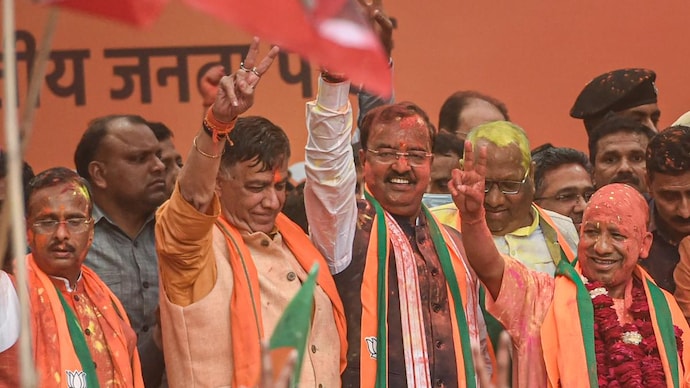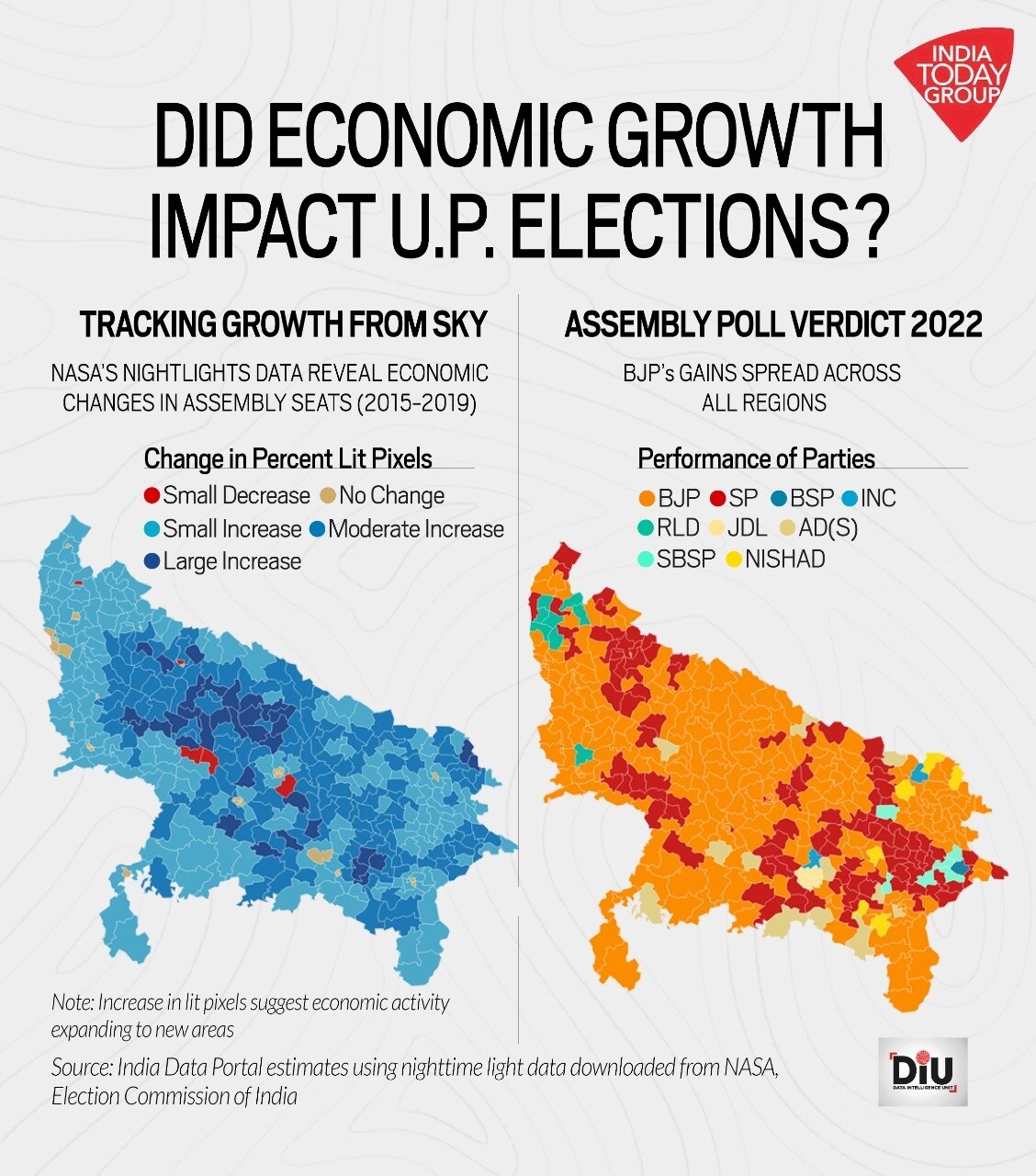Nightlight and incumbency: Did BJP benefit from growing economic activities in large parts of UP?
The India Data Portal of the ISB's Bharti Institute of Public Policy mapped the change in economic activities for a period of five years across all 403 UP assembly constituencies based on nightlight data.

Jewar, near Noida, home to an upcoming marquee airport project, has seen multiple protests in recent years. While some farmers opposed forced displacement, others were reportedly miffed with the monetary compensation given in lieu of the land acquired for the projects.
The assembly contest here, therefore, was considered a closely fought one. However, when the results were announced, the sitting Bharatiya Janata Party (BJP) nominee won this seat by a big margin — more than 56,000 votes — suggesting overwhelming support for the incumbent.
Jewar is one of several Uttar Pradesh constituencies witnessing expansion in economic activities, mostly in services and manufacturing. The India Data Portal of the Indian School of Business’s Bharti Institute of Public Policy mapped the change in economic activities between 2015-2020 across all 403 UP assembly constituencies based on nightlight data.
Widespread economic expansion in UP, nightlight data show
Jewar witnessed one of the sharpest increases in total radiance in the last five years. India Data Portal’s analysis noted that “389 constituencies out of 403 have shown a positive change in total radiance, indicating a surge in economic activities.” It added that 17 per cent of the constituencies in the state showed a large increase, 52 per cent a moderate increase, and 27 per cent registered a small increase, adding, “Meanwhile, 0.5 per cent of the constituencies have depicted no change and three per cent a small decrease.” In other words, economic expansion has been quite widespread in UP.
The yet-to-be-released India Data Portal report noted that “night-time radiance, traced from outer space through satellites, has increasingly emerged as a pertinent measure for changes in economic activities irrespective of their sources (formal or informal sectors). It is also a more significant representation of economic activities in manufacturing and services than in agriculture.”
The technique of radiance mapping for bigger takeaways is based on the assumption that most of the economic transactions outside of agriculture invariably result in greater energy consumption — industrial or domestic. More radiance, therefore, means more economic activity.
Economic activities touching new areas in UP
While an increase in radiance indicates economic expansion per se, a spike in the percentage of lit pixels suggests that hitherto untouched areas too are witnessing economic transactions. Lit pixel expansion is therefore indicative of the distribution of economic activities.
As per the India Data Portal data, Masrikh, Gopamau, Pratappur, Etah, Husainganj, Aliganj, Machhlishahr, and Tilhar were among constituencies that witnessed the biggest change in per cent lit pixels. In other words, in all these constituencies, services and manufacturing activities have entered new areas.

BJP did well in regions where nightlight data showed economic expansion
Incidentally, in the recently concluded assembly elections, the BJP won six such seats. And in Padrauna, which was considered a stronghold of Swami Prasad Maurya, a former minister who quit the BJP weeks ahead of the elections, the BJP won with a big margin of 42,000 votes.
According to India Data Portal, “25 per cent of the constituencies show a large increase in per cent change in lit pixels while 64 per cent of the constituencies show a moderate and small increase.”
Ashwini Chhatre, executive director of the Bharti Institute of Public Policy of ISB, said, “We have tracked nightlight data of the four states that went to the polls recently. While expansion between 2015-2019 was marginal in Punjab, the dip in the pandemic year of 2020 was quite substantial. In the case of Uttar Pradesh, expansion, albeit on a low base, was significant, and the pandemic-induced dip relatively small.”
Incidentally, the incumbent suffered big electoral reverses in Punjab while the ruling BJP got yet another term in Uttar Pradesh. Other than electoral arithmetic and chemistry, expansion or contraction in economic activities may have played a part.
ALSO READ | BJP-SP battle set to intensify as UP gears up for legislative council polls
ALSO READ | Who is likely to be part of Yogi Adityanath’s new cabinet in Uttar Pradesh?

